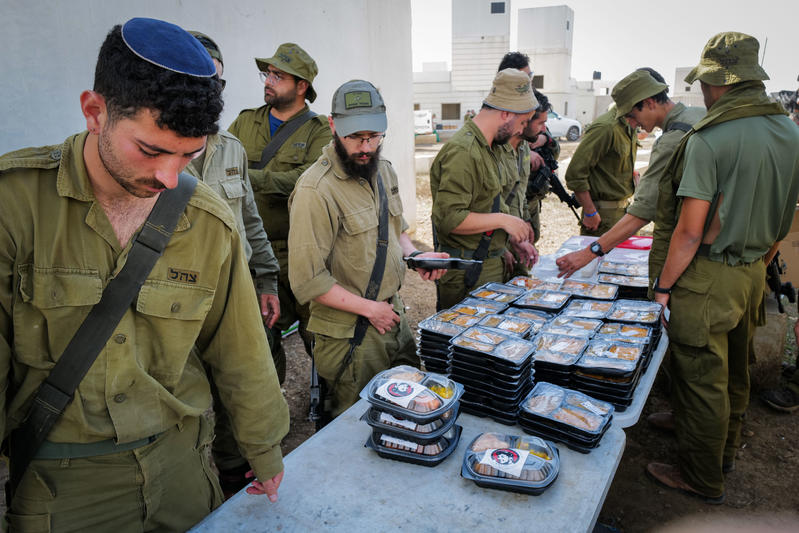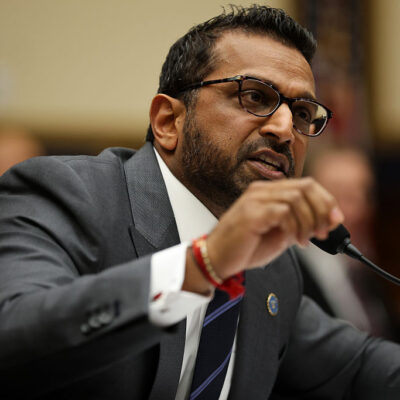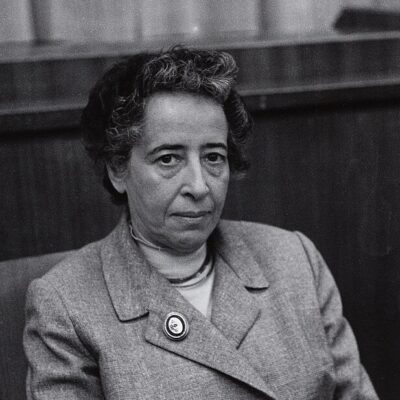Opinion
THE GOOD FIGHT
Transforming workplace conflict: 7 lessons from JSJR’s pilot program
In 2021, against the backdrop of the COVID-19 pandemic, a rising tide of burnout, reevaluation of relationships to work and resignations washed over the Jewish nonprofit field. We heard from leaders in the Jewish Social Justice Roundtable‘s network that they and their staff felt like they were drowning in the changing professional landscape and needed support.
In response, with the generous partnership of the Righteous Persons Foundation, the Jewish Social Justice Roundtable started the Organizational Change Initiative, a new initiative focused on organizational culture and change. We launched the program with six months of discovery, asking how we might help make our organizations great, effective places to work. While many of our organizations receive data and support from Leading Edge to build strong organizational cultures, we quickly saw a clear set of dynamics and challenges that are specific but not unique to the Jewish social justice field.

Getty Images
Illustrative.
After hearing from 40 people across the field, results were clear: We uncovered a pattern in our field, mirrored in our broader society, of conflict avoidance. The tensions and pressures in the broader world were also showing up inside organizations.
Avoiding conflict is neither sustainable nor productive. In fact, it was named in the discovery phase as an obstacle to creating inclusion, equity and belonging at work. Instead, we think generative conflict should be seen as a skill that individuals and organizations can learn and apply to navigate differences, welcome diversity of opinions and work together more effectively.
JSJR launched a two-year pilot program to build conflict management skills among the staff of over 50 nonprofit organizations, informed by interpersonal dialogue research, best practices in organizational culture and accessible pedagogy. This pilot was part of a larger initiative to reshape organizational culture by equipping teams with the tools to navigate disagreements constructively. By training specific audiences separately — individual contributors, leaders responsible for organizational culture and CEOs — we found that organizations could improve their cultures.
While our work is by no means finished, the results have been overwhelmingly positive: employees report feeling greater agency when addressing workplace tensions, organizations feel more prepared to manage conflict and staff now share a common language when discussing issues. Here are seven key insights we’ve learned from this work:
1.) Conflict is inevitable, so don’t avoid it
Many workplaces operate under the assumption that conflict is inherently negative. This leads to avoidance behaviors that often allow tensions to fester. Instead, our curriculum reframes conflict as a natural and necessary aspect of working with others. Rather than avoiding it, individuals and organizations should build the skills to address it early and productively.
2.) Conflict engagement is a skill that can be learned
Like any other professional skill, the ability to navigate conflict requires training and intentional practice. Our program emphasized skills-building exercises that helped participants reframe how they approach difficult conversations, listen actively and find solutions that support both individuals and the organization.
3.) Focus on what’s effective — not just what feels comfortable
Sometimes people use conflict resolution strategies that feel good in the moment, such as smoothing over disagreements or prioritizing consensus at all costs. Sometimes people use strategies that position them personally as right or righteous, implicitly focusing on what makes them feel good. However, effectiveness isn’t always comfortable. Our curriculum emphasizes that resolving conflict requires managing personal discomfort and prioritizing effective outcomes over immediate emotional relief.
4.) Power matters, but it’s not the only factor
A common challenge in workplace conflict is the role of power dynamics. While power can’t be ignored, focusing exclusively on it can be counterproductive. Our approach balanced the recognition of power differentials with practical strategies for individuals to engage in conflict constructively, regardless of their role in the organization.
An example: One participant shared that the different positional power at work meant that she couldn’t express differences with her boss or navigate the ensuing conflict. She didn’t want to risk sharing her disagreement directly with her supervisor. Without sharing this information, it was hard to move forward in addressing the conflict. This is a choice that employees make every day — an understandable one given the power dynamics, but one that lessens both their and the organizations’ ultimate effectiveness. Focusing on what their priority was and what power they had access to helped support that person to voice their disagreement in a solutions oriented way.
5.) Empathy is a powerful tool
One of the most striking findings from our pilot was the impact of intentional empathy-building exercises. While many organizations emphasize efficiency and performance, few prioritize developing empathy as a communication skill. When staff practiced perspective-taking and deep listening, they reported more productive conversations and ability to compromise.
6.) Both/And: Individuals can make a difference and organizations must address conflict structurally
While organizational policies are critical, they can sometimes discourage or slow processes down. Individuals can address and move through conflict effectively on their own. By providing staff with clear frameworks and language to use, we found that people felt more empowered to raise concerns, set boundaries and work toward resolution without waiting for leadership intervention. Even offering a simple template for how to receive feedback was deeply appreciated and repeatedly referenced as a useful tool.
While individual skills matter, organizations also must examine how conflict is handled structurally. Many workplaces lack clear policies for addressing disputes, which leaves employees unsure of their options. Our curriculum encourages organizations to assess their conflict systems, clarify reporting processes and establish workplace norms and structures that support open dialogue. One important caveat is that our resources do not address certain categories of conflict at work, like harassment, formal mediation or collective bargaining agreements.
7.) CEOs shape organizational conflict culture
Leadership buy-in is critical for sustaining a culture that embraces constructive conflict. CEOs and executive leaders play a unique role in setting the tone for how conflict is handled. Our training aims to support executives to model and encourage healthy conflict practices, rather than avoiding it.
Adapting to changing realities
Little did we know that the events of Oct. 7, 2023, and the subsequent divisions would make our focus on conflict ever more important. The same skills used for navigating workplace conflict can be used to build or repair relationships with partner organizations and community groups. We used the research and lessons from our general conflict curriculum to create trainings specifically for addressing the Israel-Palestine conflict.
The forces that polarize and divide, including the weaponization of antisemitism and the attempts to wedge groups who would be working together apart, were — and are — quite literally bearing down on the shoulders of staff teams, encouraging them to disagree. Sometimes that leads to direct confrontations about what organizations should do. More often, it leads to quiet tensions that go unspoken and unaddressed, fostering misunderstandings and ultimately more division. For example, one person said to us, “I can’t talk to my colleague because of their Instagram post about the war in Israel and Gaza.” We heard this sentiment from across the political spectrum. These polarizing dynamics get in the way of our greater work of building justice and defending our democracy as a core expression of Jewish life. But they don’t have to.
Expanding the impact
The success of this pilot program has led us to expand our efforts. The skills developed through this curriculum are now being applied in external collaborations, cross-sector partnerships and community initiatives. Conflict resolution is not just a workplace competency — it’s a fundamental skill that enhances communication, strengthens relationships and builds more resilient organizations. A skill that we believe will help achieve the vision of a world we’d like to see: a loving, caring and equitable place in which power is shared and all live with dignity.
Our next phase of implementation began this summer with the launch of a new set of resources to use when issues arise at work. You Have A Conflict At Work, Now What? A DIY Conflict Guide is a practical, values-rooted tool designed to support staff at all levels in navigating workplace tension or conflict with more ease and clarity.
By shifting our mindset about conflict from something to be avoided to something to be developed, we empower individuals and organizations to navigate challenges more effectively. The result? Stronger teams, healthier workplaces, more effective strategies and a culture where conflict serves as a catalyst for growth rather than a source of dysfunction. Our hope is to continue building these skills for the sake of a Jewish future where we all can thrive.
Abby Levine is the CEO of the Jewish Social Justice Roundtable.
Rachel Gottfried-Clancy is an advisor to the Jewish Social Justice Roundtable.

 Add EJP on Google
Add EJP on Google









